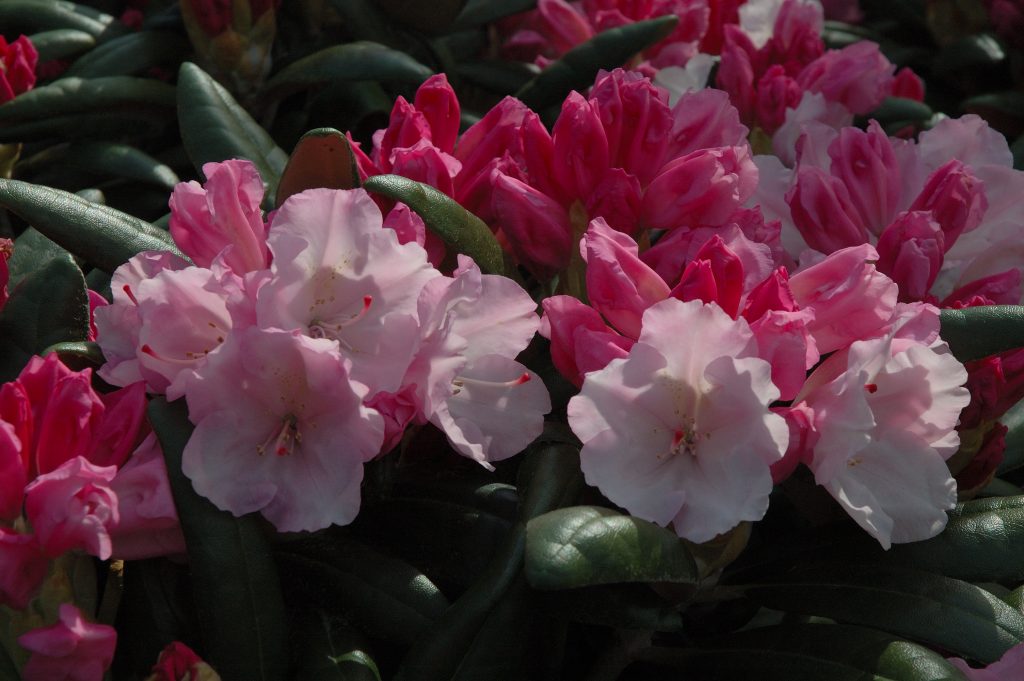
Now is the season for rhododendrons. There may have been a few in bloom earlier in the season but they are now at their peak, perhaps a little later than usual because of the cool spring.
When I lived in Oxted, at the foot of the Downs, I could only dream of growing rhododendrons, even though they flourished just half a mile away in the acid greensand soil.

Rhododendrons are calcifuge, meaning that they cannot grow in soil that contains calcium. They, and other acid-loving plants, have adapted to grow in soils that are deficient in calcium, which is an essential nutrient for most plants. In alkaline (limey) soils they cannot absorb iron and magnesium, needed to make the leaves green.
If you have acid soil, and neighbours have rhododendrons in their garden, you can plant them in your plot. If you have alkaline soil it is best to grow them in pots of ericaceous compost. This is perfectly possible but you will need to feed them and make sure they are always moist and never dry or waterlogged – both problems that will cause the leaves to drop off or roll up and go brown and drop.
Other plants that dislike lime in the soil are camellias, pieris, kalmia, summer heathers, skimmers and azaleas (which are really rhododendrons but will be called azaleas for a long time!)
Rhododendrons need a well-drained soil but dislike drought. They have very dense, fibrous roots when you plant them so it is worth soaking them well before planting and then be prepared to water them regularly the first year so they do not dry out. The dense canopy of leaves deflects water away from the base of the plant so you will need to water them to keep them alive even if it has rained.

Most prefer a lightly shaded spot. They will grow in full sun and they will flower best in good light but they are not suitable for hot, sunny spots. Evergreen, Japanese azaleas are low and spreading and generally easy to please. Many deciduous azaleas have fragrant flowers and tend to be taller. Rhododendrons themselves vary hugely in size and shape so check the ultimate height before you buy.

Rhododendron tips
Promote growth by deadheading your young plants. When the flowers drop snap off the old flower truss – the new growth will appear from just below this.
Mulch around plants with leaf mould or compost and apply a rhododendron fertiliser as soon as flowering is over.
Look for bud blast – this is where the flower buds do not develop but turn black, later with black hairs growing from them. This is caused by a fungus that is spread from bud to bud by leaf hoppers. These small, flying insects feed on the leaves in summer and puncture the buds, infecting them with fungus. You can prevent the problem by a) snapping off any ‘dead’ flower buds as soon as you can identify them and b) spraying the whole plant i summer if you notice the leaf hoppers – but be careful with any insecticide used in the open garden.
Large, overgrown rhododendrons can be pruned if required. This is best done as soon as possible so there is a long growing season for the plants to mature new growth.